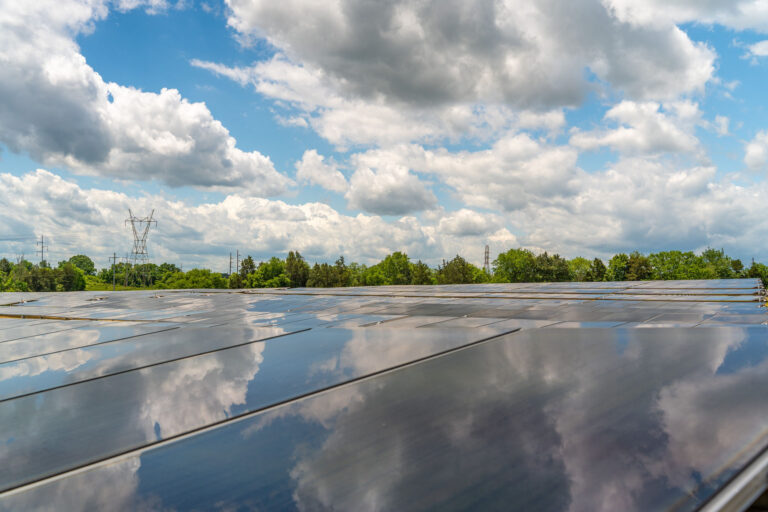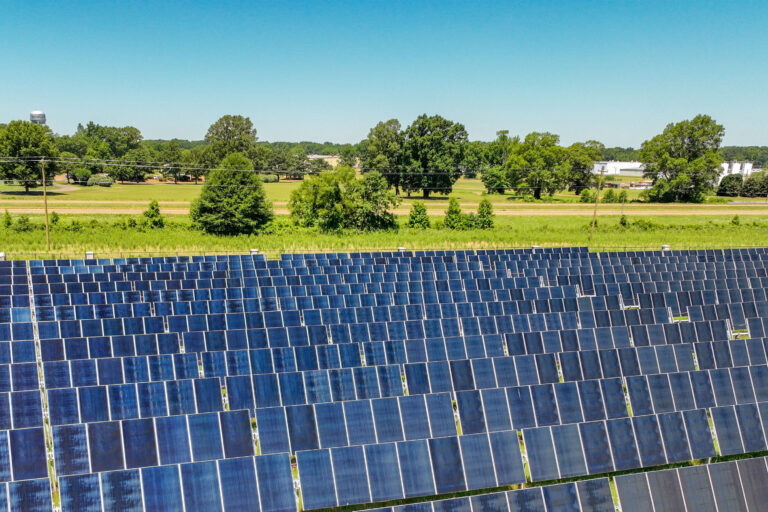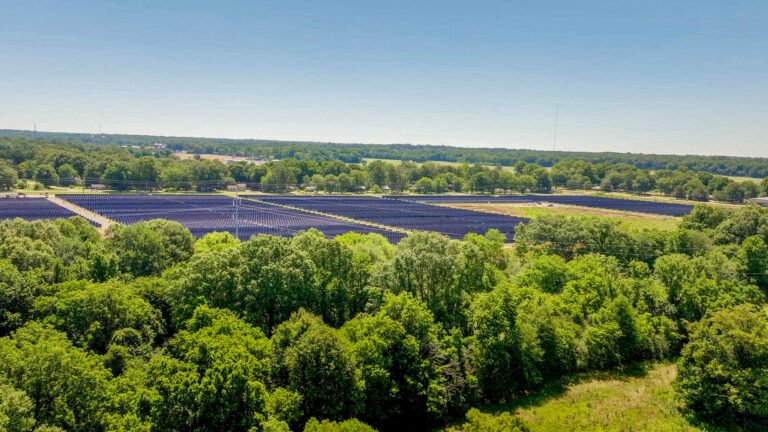Read original article at Deloitte WSJ.
Clearloop’s Laura Zapata describes how organizations can scale the impact of their decarbonization strategy with investments that accelerate deployment of renewables in hard-to-reach markets.
Growing demand for renewable energy and decarbonization methods makes it critical for organizations to tap into innovative investment and capital structures to accelerate progress, says Laura Zapata, the CEO and co-founder of Clearloop, a company that helps deploy renewable energy in high carbon-intensity grids in the United States.
During a session at the 2024 Deloitte Renewable Energy Seminar, Zapata explained in a discussion with Marlene Motyka, a principal and U.S. Renewable Energy leader for Deloitte Transactions and Business Analytics LLP, how organizations can invest in clean energy and reduce their carbon footprint while supporting economic development in communities that are dependent on fossil fuels.
Motyka: Power purchase agreements (PPAs) and tax equity have significantly boosted renewable energy growth in the past decades, but not all markets or projects can access PPAs or secure tax equity. Are there alternatives?
Zapata: To decarbonize and expedite clean energy deployment, innovative capital structures are crucial. While PPAs have successfully unlocked numerous projects across the country, particularly in Texas and California due to various incentives, there are still regions like Tennessee and Mississippi with ample land and sunshine but less than 1% solar penetration. Addressing these challenges requires innovative financial models to unlock funding and facilitate project construction.
Another way to tackle these projects is by targeting the areas with the most carbon-intensive grids. Many companies are looking for ways to reduce their carbon footprint by investing in renewable energy projects to meet increasing energy demand. Instead of buying the actual electricity, companies are buying the environmental benefits associated with it. The electricity produced helps reduce carbon emissions, which is an added benefit of what they are purchasing.
Buyers can get these environmental benefits from the projects, and funding is secured upfront before the projects start operating commercially. Then we can collaborate with utilities to execute power purchase agreements for the electricity alone or “brown power,” which is stripped from the “green” attributes. Although it’s the same capital stack for funding a new renewable project, certain aspects come together differently. For example, the agreement bifurcates the power purchase from the sale of the environmental attributes, and the timing of each part of the stack differs. This approach helps deploy projects in regions where traditional power agreements might not be as effective by helping establish value for the carbon emissions avoided in addition to the megawatt hours generated.
How can this type of structure be scaled?
Capital structures can be scaled up through strategic partnerships and by leveraging legislative incentives. For instance, when Clearloop was acquired by Silicon Ranch, a major independent power producer, it provided us with the necessary sponsorship and market entry support to overcome barriers to scaling our operations effectively.
An important factor in scaling is a willingness of strategic partners to assume elevated merchant risk. In our case, Silicon Ranch’s approach to taking on this risk enabled us to mitigate other project risks, facilitating smoother operations and growth.
Legislative measures such as the Inflation Reduction Act (IRA) have also been instrumental. The IRA offers tax credit transferability and additional incentives for projects in high-carbon energy communities, which we qualify for. These incentives make it easier to attract investment and scale projects.
In addition, the IRA and other measures like the Greenhouse Gas Reduction Fundhave empowered more institutions to invest public funds in innovative ways. This has increased financial creativity and support while de-risking transactions, helping financing parties to become more comfortable engaging in these projects. By leveraging strategic partnerships, legislative incentives, and creative financing, we can effectively scale up innovative capital structures while reducing associated risks.
Can you provide an example of a project that has been undertaken with these types of capital structures?
At the intersection of the Mississippi Delta and the Appalachian foothills, in Panola County, Mississippi, the community has embraced solar projects. They recently turned on their third distributed generation solar project, producing a total of 20 megawatts of power. Collectively, these projects are supported by more than 30 organizations from across the country convening under this capital structure. These organizations reduce their carbon footprint by investing in solar projects to expand access to clean energy in communities that can benefit from it. Organizations across the country are searching for these types of solutions, and this type of structure enables them to connect with communities they might not have encountered otherwise.
How can opportunities for this type of funding structure be identified?
Three primary factors help identify communities where these types of projects can thrive: the level of sunlight in a location, the carbon intensity of the grid, and socioeconomic and demographic data for the local community. Data related to these factors often helps identify communities in lower-income areas that are dependent on fossil fuel and could benefit from decarbonization, which the U.S. government is now incentivizing with renewable energy projects. This positioning allows these projects to serve as economic development tools, moving the focus from climate change to infrastructure development.
How can the carbon offsets for these types of projects be measured?
The Greenhouse Gas Protocol (GHG Protocol) helps standardize carbon accounting practices, and third-party registries have emerged to provide verification against this protocol, each with distinct policy stances. Within the United States, significant efforts are still required to advance renewable energy deployment, especially concerning decarbonization in specific communities. Unlike many other countries, the United States does not have a single, unified grid system, leading to uneven impacts of carbon investments across different regions, which often leaves some communities behind.
To address this, we have developed a methodology tailored to the U.S. market based on the GHG Protocol, and we have sought third-party assurance to validate it. Assurance helps provide transparency, which supports credibility. The absence of a universal regulatory framework to govern carbon reporting makes it challenging, so this is a work in process.
As demand for clean energy grows, what is your vision for the renewable energy sector another decade into the future?
There’s a significant need for innovation in the U.S. electricity system, as we plug more devices into our grid and witness rapid growth in AI, which requires a great deal of power. Utilities must determine how to keep everything running efficiently. We are in a crucial moment to accelerate renewable energy adoption, recognizing the social and health costs of fossil fuels.
At Clearloop, we begin from a fundamental understanding that our country’s carbon footprint mainly comes from transportation and power sectors. As we electrify transport, pressure on the power sector increases, making this an exceptional time to consider new capital structures and investment methods to accelerate grid decarbonization. Over the next decade, I hope we’re discussing the massive growth of battery storage and renewables—not just to replace existing fossil infrastructure, but to support the immense demand on our grid.
The next five years are pivotal. We need creative strategies to mobilize capital for deploying clean technologies. The IRA has laid some groundwork, particularly around tax credit transferability. People want their investments to work, so these credits can help drive progress. I’m optimistic, but it’s time to get to work.
—by Tammy Whitehouse, senior writer, Executive Perspectives in The Wall Street Journal, Deloitte Services LP





